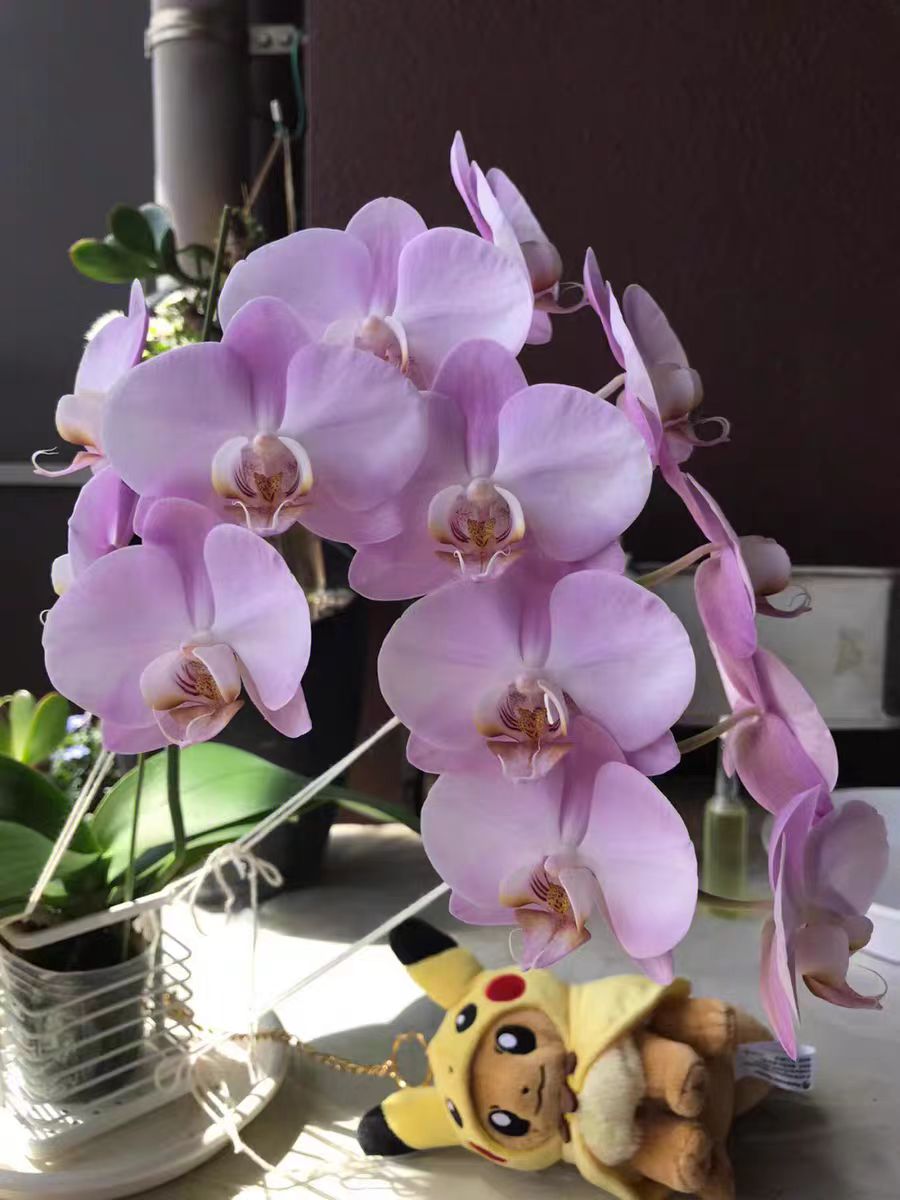In the process of maintaining Phalaenopsis orchids, root pruning is a common operation. Whether dealing with rotten roots, empty roots, or conducting division propagation, it is necessary to disinfect the wounds after root pruning to prevent pathogen infection and ensure the healthy growth of the plants. So, what should be used to disinfect Phalaenopsis orchids after root pruning? Can alcohol be used for disinfection?
First, let's analyze the feasibility of using alcohol for disinfection. Alcohol has certain bactericidal ability and can quickly denature bacterial proteins, thus achieving a sterilization effect. However, for the disinfection of Phalaenopsis orchids after root pruning, alcohol is not suitable. On the one hand, alcohol is highly volatile and has a short action time, making it difficult to completely kill the potential pathogens around the wound. On the other hand, alcohol is highly irritating and can damage the wound tissue of Phalaenopsis orchids, hindering wound healing. The roots of Phalaenopsis orchids are relatively fragile. Alcohol may cause cell dehydration at the wound site and even burn the roots, affecting the subsequent growth and recovery ability of the plants. Therefore, it is not recommended to use alcohol for disinfection after pruning the roots of Phalaenopsis orchids.
So, what disinfectants are suitable for Phalaenopsis orchids after root pruning? The most commonly used one is carbendazim. Carbendazim is a broad - spectrum fungicide that can inhibit and kill a variety of fungi. When using it, carbendazim can be prepared into a solution according to the proportion in the instructions. Soak the pruned roots of Phalaenopsis orchids in the solution for 15 - 30 minutes, and then take them out and dry them. This can effectively prevent pathogen infection. In addition, potassium permanganate solution is also a good choice. Potassium permanganate has strong oxidizing properties and a significant disinfection effect. Prepare a potassium permanganate solution with a concentration of 0.1% - 0.2%, and soak the roots of Phalaenopsis orchids in it for 10 - 15 minutes. This can also achieve a good disinfection effect. However, it should be noted that the concentration of the potassium permanganate solution should not be too high, otherwise it will damage the roots.
In addition to the above - mentioned chemical agents, some natural substances can also be used for the disinfection of Phalaenopsis orchids after root pruning. For example, plant ash contains rich minerals such as potassium. It can not only disinfect but also supply nutrients to the plants. Smear plant ash on the wound after root pruning, which can form a protective film on the wound surface and block the invasion of pathogens. Cinnamon powder also contains natural bactericidal components. Evenly smear cinnamon powder on the wound, which can not only disinfect but also promote wound healing.
When using disinfectants, there are also some details that need attention. No matter which disinfectant is chosen, the concentration and soaking time should be strictly controlled according to the instructions. After disinfection, place the Phalaenopsis orchids in a well - ventilated and cool place to dry. After the wound surface is dry, repot or transplant the orchids to avoid secondary infection caused by the wet wound.
In short, disinfection is crucial after pruning the roots of Phalaenopsis orchids, but alcohol is not a suitable disinfectant. Carbendazim, potassium permanganate solution, plant ash, cinnamon powder, etc. are all safer and more effective choices. Mastering the correct disinfection methods and techniques can help Phalaenopsis orchids recover and grow better.
What should be used to disinfect Phalaenopsis orchids after root pruning?

Share with
Tagged in :




Leave a Reply